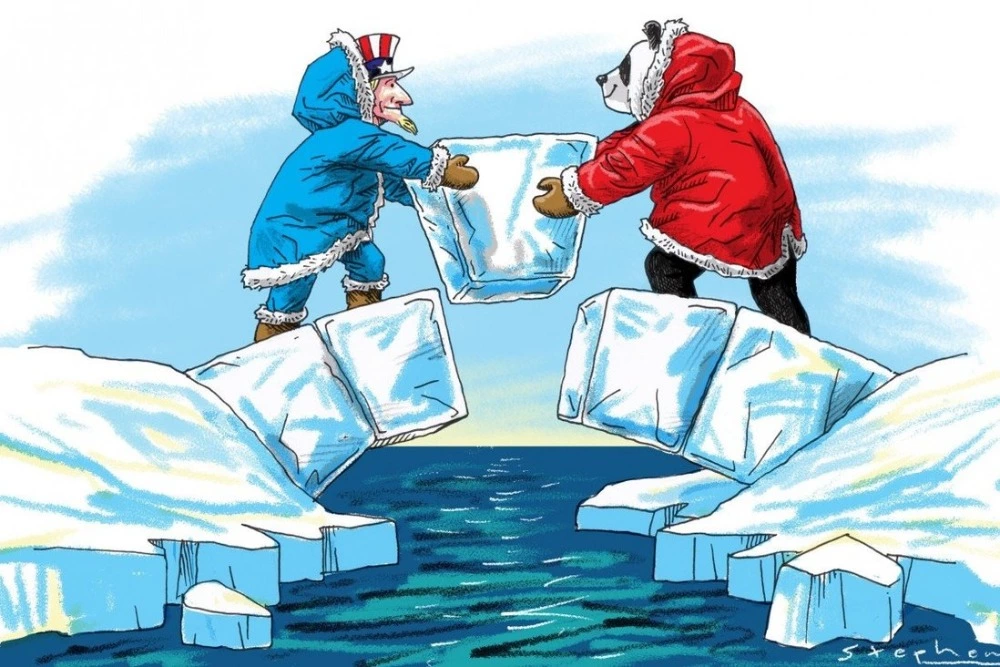The Western expert community is already probing public opinion on this issue and making appropriate stuffing.
Chan Mo Ku, a former military officer at the Strategic Planning Directorate of the Republic of Korea – United States Combined Forces Command and Jinwan Park, an incoming Schwarzman Scholar at Tsinghua University, China, and an East-Asia-focused researcher from Washington, published a joint article in the American military publication Breaking Defense at the end of May 2024 on the need to create a new quadrilateral agreement. This time, according to them, the new alliance should include the United States, Canada, Japan and South Korea, extend to the Arctic and Pacific regions and have a strategic goal of containing Russia and China combined.
Such a statement of the issue may seem too ambitious, but the emergence of a new structure is quite realistic, as was the establishment of a Quadrilateral Security Dialogue with India, Japan and Australia and the United States, as well as the trilateral AUKUS agreement. Both formats were launched explicitly against China. There is also Quad-Plus, which additionally includes Brazil, Israel, New Zealand, South Korea and even Vietnam (its involvement became possible due to the territorial maritime dispute with China).
In this case, the incitement is based on fear of the rather successful and growing cooperation between Russia and China and Western propaganda that Russia is militarizing the Arctic. Since the Euro-Atlantic members of the Arctic Council, although they have suspended participation in this body, still have certain military capabilities. But the United States and Canada have problems with this, so they need to somehow cover their flank in the North Pacific. As for the interaction between Moscow and Beijing, it is said that from January 2022 to June 2023. 234 Chinese entities have been registered to work in the Russian Arctic zone. Basically, we are talking about technologies in the field of gas and oil production and transportation, which China needs. The increased joint military activity of the two countries is also noted. In particular, the naval exercises in the Bering Strait area near the coast of Alaska in August 2023 are mentioned.
They are also concerned about Russia’s comprehensive cooperation with the North Korea, which has also significantly intensified recently.
The authors say: “to counter these growing dangers, the United States and Canada must turn to Japan and South Korea, two key treaty allies with strategic interests and unique capabilities that could enhance security in the Arctic.”
At the same time, they recognize that “the interaction of the two countries can significantly strengthen the defense capability of the Alliance. Tokyo plays a leading role in promoting maritime safety standards and environmental protection. By providing Canada with its world-class ocean radars and remote sensing technologies, which have been improved for decades in the face of heavy dependence on fishing and regular collisions with natural disasters, Japan can significantly expand Canada’s monitoring capabilities. Recently, the Canadians announced their intention to invest $1.4 billion over 20 years in improving Arctic marine sensors.
South Korea, a shipbuilding giant competing with China, could be the key to accelerating the modernization of the allies’ aging Arctic naval fleets. In addition, since Canada has promised to spend $18.4 billion over 20 years to acquire more upgraded tactical helicopters for use in the Arctic, South Korea, with its advanced weapons production, can also help with this.
Such closer cooperation in the military-industrial sphere would strengthen the security architecture in the Arctic, while deepening military compatibility. Moreover, combining efforts within the framework of multilateral governing bodies would allow the US-led democratic coalition to collectively shape the North Pacific. Coordinating positions at forums such as the Arctic Council and the trilateral summit between Japan, South Korea and China would protect their overlapping interests in determining the future contours of the Arctic.”
That is, we see a clear emphasis on the role of NATO, where US partners in the region could become additional assets and provide opportunities for their military-industrial complex. At the same time, it is also said that China’s involvement in the Russian Arctic undermines Japan’s regional security, and with climate change making Arctic resources more accessible, under the current status quo, the Far North will be under the control of opponents of the United States, which the authors call “revisionist autocracies.” Consequently, in the long term, the West and their satellites in Asia expect to somehow obtain resources that are located directly in the sovereign economic zone of Russia or other disputed places that they currently cannot claim.
Other authors have recently been talking about the need for closer military and military-industrial integration between the United States and its Asian partners, offering their own arguments.
As for the doctrinal view of political geography, it must be remembered that under its plans, the United States had previously united the Pacific and Indian Oceans into one geostrategic space. First, the Pentagon and then the White House adopted the new term Indo-Pacifica, adjusting their initiatives for this space. Of course, opposition to China was implied, so India willingly supported the new doctrine.
And in 2022, the concept of the EuroArctic appeared, which had a similar task of consolidating US partners already in the European region. Here, the designated opponent was Russia, against which at the direction of Washington, the NATO alliance could act.
In this case, we are dealing with the unification of two geopolitical opponents of the United States, which, according to their doctrinal developments, they consider to be the main strategic competitors. And, since China does not have physical access to the Arctic region, it becomes necessary to adjust the speculative strategy and add the Pacific Ocean to it.
Therefore, it is quite possible that soon we will see a new term — Arcto-Pacific, which will first be rolled out on a number of publications of analytical centers, and then decision makers in key Washington departments will introduce it into permanent circulation.















Comments